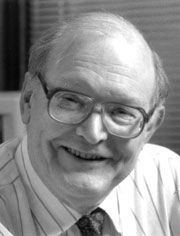Nationality U.S. Role Physicist Alma mater MIT | Fields Condensed matter physics Name Michael Tinkham | |
 | ||
Institutions Harvard UniversityUniversity of California, Berkeley Notable awards Oliver E. Buckley Condensed Matter Prize (1974)Fred E. Saalfeld Award for Outstanding Lifetime Achievement in Science (2005) Books Introduction to Superconductivity, Group Theory and Quantum Mechanics Awards Guggenheim Fellowship for Natural Sciences, US & Canada | ||
Doctoral advisor M. W. P. Strandberg Residence United States of America | ||
Michael Tinkham (February 23, 1928 – November 4, 2010) was an American physicist. He was Rumford Research Professor of Physics and Gordon McKay Research Professor of Applied Physics at Harvard University. He is best known for his work on superconductivity.
Contents
Professional life
Michael Tinkham studied at Ripon College (BA 1951) in Wisconsin, near where he grew up, and later at the Massachusetts Institute of Technology (Master's Degree 1951), where he graduated in 1954 with a PhD. During 1954/55 he was at the Clarendon Laboratory of Oxford University. In 1955 he went to the University of California, Berkeley, in 1957 becoming an Assistant Professor, and later a Full Professor. In 1966 he joined the faculty at Harvard University. During 1978/79 he was a Humboldt U.S. Senior Scientist at the University of Karlsruhe. Professor Tinkham has concentrated on superconductivity and in 1975 published one of the classic textbooks on the subject. More recently he has focused on material properties where sample dimensions are in the nanometer range, including studies of nanowires and carbon nanotubes.
In 1970 he was made a member of the National Academy of Sciences, and in 1974 he received the Oliver E. Buckley Condensed Matter Prize. Prof. Tinkham was awarded the Fred E. Saalfeld Award for Outstanding Lifetime Achievement in Science in 2005. He has also been honored for his achievements by his colleagues in the Journal of Superconductivity.
Work on superconductivity
In 1956, Tinkham and a fellow postdoc Rolfe Glover found the direct evidence of an energy gap in the continuous distribution of energy levels in the form of a sharp rise in the absorption spectrum of a superconductor. The absorption spectrum observed was a direct consequence of the coherence factors of the BCS theory of John Bardeen, and along with other observations, provided the first substantive experimental confirmation of the BCS theory.
Tinkham also studied the macroscopic quantum behaviour of superconductors, and examined the conditions under which transitions between different energy levels happen when superconductors are carrying a current.
